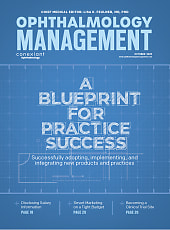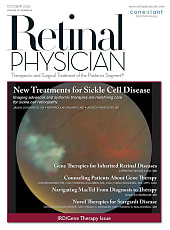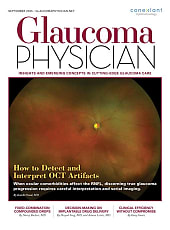Ligneous conjunctivitis is the most common clinical manifestation of plasminogen deficiency type 1 (PLGD-1), with 81% of patients presenting with ocular involvement. PLGD-1 is a systemic protein deficiency characterized by the formation of ligneous lesions on mucosal membranes throughout the body. The lesions are often inflamed, painful, and, if left untreated, can lead to organ dysfunction and failure, including vision impairment and blindness.1 With the FDA approval of RYPLAZIM (plasminogen, human-tvmh; Kedrion Biopharma), there is now an effective treatment for PLGD-1.2
Manifestation
In this case of a female patient, signs of PLGD-1 began several years prior to the diagnosis. For example, before age 8, she experienced recurrent urinary tract infections and episodes of pseudomembranous conjunctivitis.
At age 8, she presented with a hypertensive crisis—her blood pressure reached 220/160 mmHg—resulting in hospitalization and intensive care. These diverse manifestations pointed to widespread organ involvement, later understood to be driven by PLGD-1.

Diagnosis
At age 10, the patient recalls having “pink eye,” which was diagnosed as pseudomembranous conjunctivitis by an ophthalmologist. Despite medical treatment with topical anti-inflammatory and antibiotic drops, as well as procedural interventions to remove the pseudomembranes, her symptoms returned. Recurrent conjunctivitis prompted referral to a pediatric cornea specialist, who recommended genetic evaluation. A geneticist subsequently confirmed PLGD-1 based on reduced plasminogen activity (26%) and identification of a PLG mutation.
Treatment
Initial treatments with plasma infusions did not raise the patient’s plasminogen levels sufficiently, due to the low plasminogen concentration. This left her unable to achieve symptom resolution or control. After the patient received her first dose of RYPLAZIM, she said she began to experience almost immediate relief.
Outcomes
The patient received an injection port, which made administering the medication much easier. Her parents have been trained to administer the infusions.
Now, at age 11, the patient receives biweekly RYPLAZIM infusions as part of her ongoing treatment. These infusions have granted her a much more normal life, including participation in activities such as softball and swimming.
Insights into PLGD-1
By Angela Y. Zhu, MD
This patient’s experience illustrates several important clinical points regarding PLGD-1. When conjunctivitis results in recurrent or chronic pseudomembranes or pyogenic granuloma-like lesions do not respond to typical treatments or follow the natural history of infectious conjunctivitis, it is important to consider PLGD-1 and send for confirmatory testing, starting with a simple blood test for plasminogen activity levels.3
PLGD-1 can be very difficult to diagnose, as its symptoms are highly varied and often attributed to common conditions. Furthermore, patients often present to different medical specialists for the various organ systems that may be involved, so it is important to communicate with other members of the patient’s care team.
Treatment with RYPLAZIM has been proven effective: By week 48 of the pivotal phase 2/3 trial for FDA approval, 78% of all external lesions completely resolved, and 75% of all internal lesions completely resolved. All remaining lesions improved in every patient, and no new or recurring lesions have been observed after 5 years of follow up.4
References
- Shapiro AD, Menegatti M, Palla R, et al. An international registry of patients with plasminogen deficiency (HISTORY). Haematologica. 2020;105(3):554-561. doi:10.3324/haematol.2019.241158.
- U.S. Food and Drug Administration. FDA approves first treatment for patients with plasminogen deficiency, a rare genetic disorder. Press release. Silver Spring, MD; June 4, 2021. https://www.fda.gov/news-events/press-announcements/fda-approves-first-treatment-patients-plasminogen-deficiency-rare-genetic-disorder. Accessed September 2, 2025.
- Shapiro AD, Nakar C. How I treat type 1 plasminogen deficiency. Blood. 2025;145(25):2954-2965. doi:10.1182/blood.2024026973.
- Shapiro AD, Nakar C, Parker JM, Thibaudeau K, Crea R, Sandset PM. Plasminogen, human-tvmh for the treatment of children and adults with plasminogen deficiency type 1. Haemophilia. 2023;29(6):1450-1458. doi:10.1111/hae.14849.









